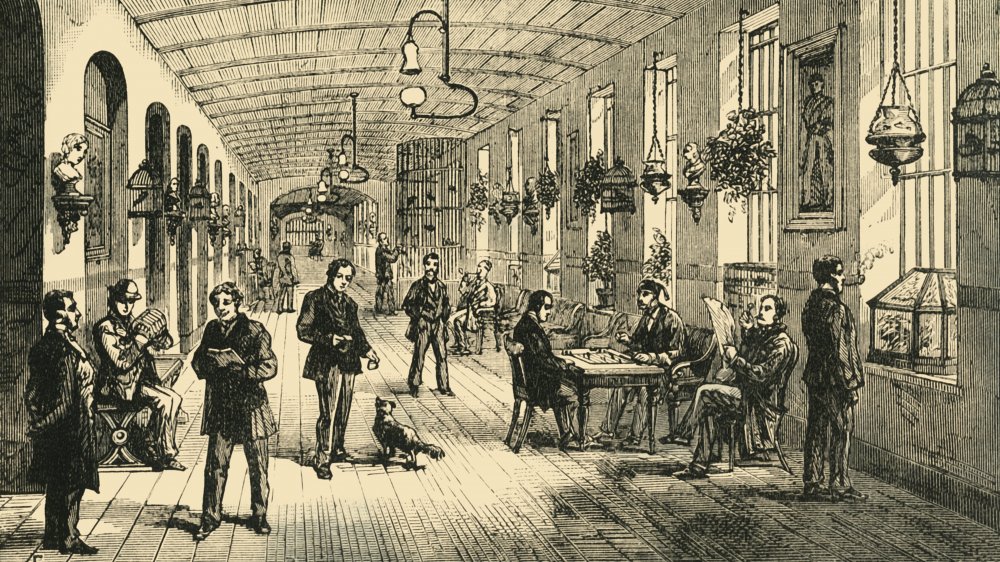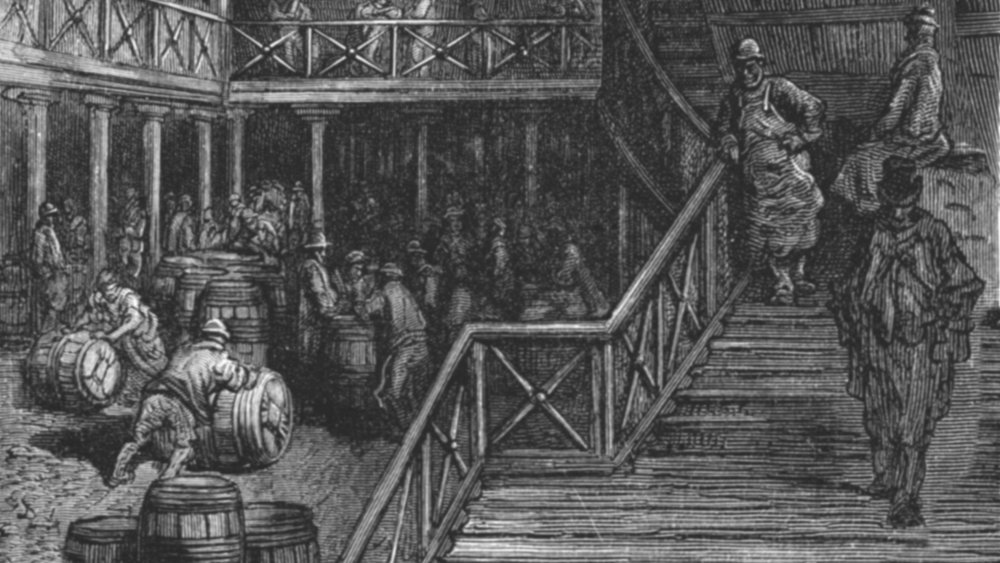Why Beer Was Surprisingly Common In Victorian Era Asylums
Beer was, in general, surprisingly common in the diets of Victorian era men, women, and children. According to EnglishHeritage, it was the most popular drink by a wide margin, with the average person drinking 32.5 gallons of beer per year. In her article "Drinking in Victorian and Edwardian Britain," published at Brewminate, Dr. Thora Hands notes that not only did people drink beer for pleasure, but for "general health-giving properties," which was encouraged by brewers' advertisements that often extolled the mental and physical benefits of their product. This perhaps makes the use of alcohol within Victorian psychiatric hospitals slightly less shocking to modern sensibilities. Per the Restoring Perspective: Life and Treatment at the London Asylum project of Western University Canada, asylums actually relied on alcohol to serve as a sedative before the availability of medications. The London Asylum reported spending $1,850 on spirits, wine, and beer in 1874.
In his 2004 article "The beer ration in Victorian asylums," posted at the Cite Seer X digital library, Niall McCrae of the Institute of Psychiatry London explained that "beer was entrenched in working-class culture" with employers "often arrang[ing] for labourers' wages to be paid at a local pub ... asylum staff, for example, were part-paid in beer."
'Beer was used as a convenient reward for labor'
McCrae goes on to explain that patient labor was necessary to keep asylums going and "all able-bodied lunatics were employed on the asylum farm, in the various workshops, or on ward chores." Because most of the asylum patients were of working class background, they would have been used to drinking beer after a day of work, and therefore "beer was used as a convenient reward for labor." Furthermore, beer was also "standard issue" at meals; patients drank little water, with almost all of their hydration needs fulfilled by beer and tea. The beer was usually made on the premises in the asylums' own breweries, where "the brewer, aided by a couple of patients, received wages equivalent to those of the head attendant." One asylum's brewery made an impressive 58,044 gallons in 1878.
The medical profession relied so heavily on the use of alcohol to treat patients that they served as "a major obstacle for temperance reformers" and their belief that alcohol was inherently bad. By the late 1880s, however, the "beer movement" to remove beer from asylums gained in popularity and the eventual prohibition of "recreational" beer for patients was relatively uneventful, with a few doctors reporting calmer, healthier populations within the asylums. "Alcohol remained in use medicinally until the development of more refined medication" for some time, however. Stout in particular was a popular treatment for melancholia, and "as a fortifying supplement for the accumulating aged and feeble patient."

